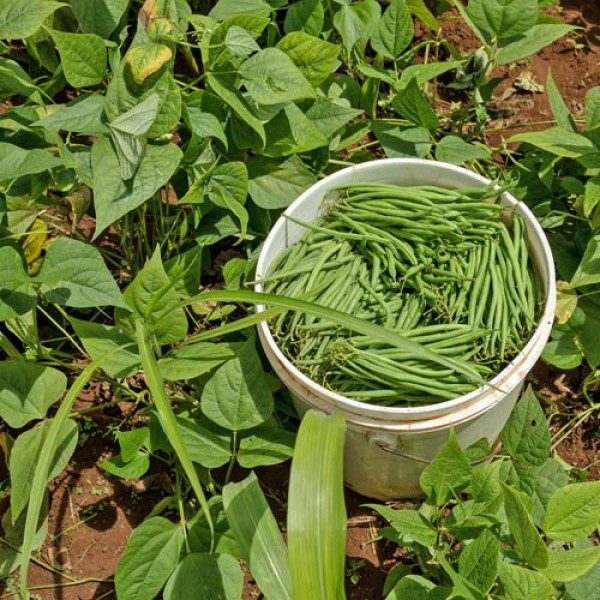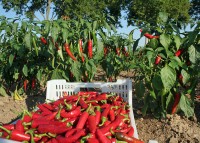
Growing Bush Beans
How to plant bush beans in your garden
Bush beans grow rather compactly and therefore do not require poles for support. They are quite easy to grow, but are particularly heat-loving, as they originally come from Central America. They also yield earlier than pole beans.
Location
Bush beans are very heat-loving and need a full-sun location, but they also thrive in semi-shady locations. They grow best in well drained, organic material and lime rich soil.
Sowing
For an early harvest, you should start growing bush beans in a greenhouse or on a windowsill. To do this, start in mid/late April and sow 4-5 seeds 2-3 cm deep in 8-10 cm pots with compost or growing soil. Keep the pots moist and evenly warm at about 20°C until they germinate. The young plants may only be planted out after the last frost have passed.
In the field, bush beans are sown in clusters from June (after the dange of frost). To do this, place 5 seeds approx. 2-3 cm deep in the soil. The clusters should be at least 40 cm apart. If you want to sow them in rows, place one seed every 5-10 cm about 2-3 cm deep. Space the rows 40 to 50 cm apart.
Care
Earth up the bean plants to give them stability. To do this, soil is packed at the stems a few centimeters high when the plants have reached a size of about 15-18 cm. Then carefully press it down. When watering, take care that the soil is not washed away again. You can also place stakes with taut ropes next to the bean plants at a distance of 10 centimeters to support them.
Beans always need sufficient water and must be kept well moist from flowering to fruiting. Regularly hoeing the surrounding soil will prevent root fly infestation. Beans do not need fertilizer, as they can bind nitrogen from the air through their nodule bacteria at the root.
Protection against pests and diseases
Good partners in a mixed crop are celery, cabbage, lettuce, beetroot and tomatoes. Other beans and peas should not be grown together with bush beans. Savory repels the black bean aphid.
When the plants are still small, slug protection is sometimes appropriate. Humid weather favours burn spot disease, a fungus that can be recognised by dark framed brown spots appearing on leaves, stems and fruits. The bean mosaic virus is transmitted by aphids, so aphids should be controlled in time.
Beans, as they accumulate nitrogen in the soil, are well suited as a pre-crop for other, high-yielding vegetable plants.
Harvest
Harvest bush beans before the pods are fully mature and while they`re still tender. That`s usually one to two weeks after flowering. Pick beans regularly to keep the plants producing.
All beans must be cooked before eating.














